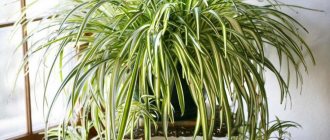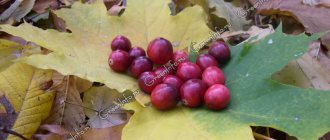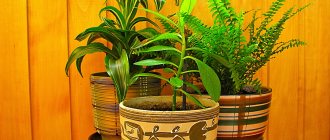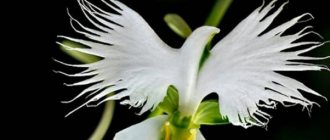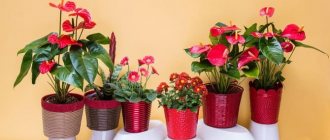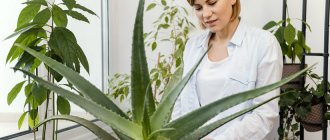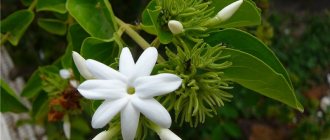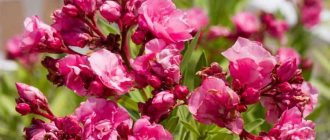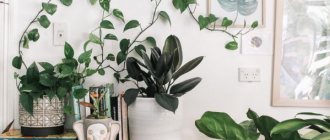What indoor plants are best for a beginning gardener to buy? Of course, those that require the simplest care. A beginner should not immediately try to grow very demanding species, as this most often ends in failure.
It is best to purchase several of the most unpretentious plants that will not go to waste even with significant mistakes in caring for them. There are many plants that are easy to care for. Among them there are decorative foliage, flowering and many other varieties to suit every taste.
Aloe - home pharmacy
This houseplant, a succulent, is loved by many gardeners for the healing properties of the juice of its leaves. The juicy pulp of aloe leaves can be used to treat a runny nose. The unpretentious plant also has wound-healing and anti-inflammatory properties. For medicinal purposes, it is necessary to use specimens that have reached three years of age.
- Aloe is easy to grow because it does not require spraying.
- Aloe needs to be watered once a week in the summer and no more than 2 times a month in the winter months.
- This low-maintenance houseplant grows well on a windowsill, however, it must be protected from direct sunlight.
Low growing indoor plants
Among the unique variety of ornamental crops, representatives of low-growing indoor flowers should be especially noted:
- Aloe, which can be recognized by its fleshy, thick leaves with small spines along the edge.
- Money Tree. A distinctive characteristic of this representative of indoor plants is the presence of many small leaves with a fleshy structure and a rich green leaf color.
- Chlorophytum. The culture is very recognizable by its lush bunch of narrow leaves with variegated colors. The color of the long leaf can vary greatly among representatives of different subspecies.
All these indoor plants need sufficient lighting, which determines the intensity of leaf color. For aloe, sunlight also serves as a powerful catalyst for photosynthetic reactions, resulting in the accumulation of bactericidal antiseptic juice, which many recognize by its viscosity and jelly-like consistency.
Accidentally missing watering will not be a mistake and will not lead to the death of the plant. Each ornamental crop (of these) is capable of accumulating excess moisture in the root system and using water during prolonged drought.
Note!
Stretch ceiling with lighting (around the perimeter, from the inside): photo of modern design, color choice, materials, sizes, price
Children's room for a girl: TOP-200 photos of modern design, layout, zoning, selection and placement of furniture for the nursery
Design of a plasterboard ceiling: new items, photos, types of construction, the ideal combination in the interior of a kitchen, bedroom, living room
Chlorophytum - air purifier
Due to its rapid growth, attractive appearance and ability to purify the air from various impurities, chlorophytum is often used for landscaping an apartment. Due to the ability of an unpretentious flower to filter the air, it is most often placed in the kitchen.
- Caring for this indoor plant is very easy. It is enough to water moderately after the top layer of soil dries out and fertilize once a month from spring to autumn.
- In order for chlorophytum to grow lush, you need to provide it with good lighting.
- When the air becomes dry during the heating season, you need to increase the humidity by spraying.
- Transplantation must be done when the root system has grown greatly.
- With proper care, the unpretentious chlorophytum will definitely show itself in all its glory and will hang rosettes at the ends of the flower stalks, so it can be grown in hanging flowerpots.
Pelargonium - blooming splendor
Pelargonium or geranium combines a lot of advantages. The flower helps purify the air. Velvety pubescent foliage and caps of flowers in pastel, rich or combined shades make this unpretentious plant a real decoration for window sills.
- In the summer months, pelargonium feels great outdoors, so it can be used to decorate a balcony or terrace.
- The rich aroma of the leaves can repel insects, including moths, so the flower is not susceptible to pests.
- By following simple care rules, you can achieve abundant flowering.
- The plant requires good lighting.
- Pelargonium tolerates a lack of moisture better than excess.
- In summer, it is necessary to water it only after the top layer of soil has dried; in winter, watering is reduced to a minimum.
- After flowering and in early spring, you need to prune overgrown shoots to form a bush shape and promote lush flowering.
- Fertilizers have a beneficial effect on pelargonium, so they can be applied in the warm season.
Spathiphyllum - women's happiness
This flowering houseplant is believed to help one find happiness and love. Unpretentious “female happiness” is also valued for its beauty. Delicate green leaves in combination with white blankets of graceful flowers look very impressive and noble.
- This unpretentious indoor flower prefers diffused light and regular watering.
- Drooping foliage indicates a lack of moisture and rises immediately after watering.
- To keep the tips of the leaves from drying out, spraying is required.
- In the warm season, spathiphyllum needs to be fed once a month.
Anacyclus
Slyunogon is the popular name for this perennial, which looks very much like chamomile. The charming plant covers the garden with a carpet of thin gray-green leaves. The short stems of Anacyclus, crowned with small flowers with white petals and a golden center, look great in rock gardens, on rocky slopes, and in container plantings.
The plant is drought-resistant, the height of the bush usually does not exceed 20 cm. It blooms profusely and for a very long time - from May to October. Some types of anacyclus are used for medicinal purposes or used as a seasoning for food.
Decembrist - winter flower
Schlumbergera (Decembrist) is a representative of the cactus family, the peculiarity of which is flowering in winter, when many indoor plants are dormant. Many pink, white, red or purple flowers decorate the house for several weeks.
- For abundant flowering, Decembrist must be kept at low room temperatures.
- In summer, the plant requires abundant watering after the top layer of soil dries out, however, nothing will happen to it if you forget to water the Decembrist on time.
- The unpretentious plant tolerates direct rays of the sun if you gradually accustom it to it.
- Adult specimens are transplanted every 5 years.
Sansevieria - a favorite of several generations
Sansevieria, popularly called “mother-in-law’s tongue” or “pike tail,” was grown by our grandmothers. This unpretentious plant is popular with several generations at once.
There are both compact varieties and specimens reaching a meter in height. The dense, elongated leaves have a variegated color and a light edging along the outer edge. Sansevieria blooms in small inflorescences with a pronounced sweet aroma.
- This unpretentious indoor plant is suitable even for novice gardeners. It is comfortable both in partial shade and in bright sun, however, specimens growing in the back of the room lose their expressive color.
- The plant needs to be watered once a week, in winter - once every 2-3 weeks.
- Transplantation is performed when the flower becomes too crowded in the pot.
Cactus - record holder for survival
The cactus is rightfully one of the unpretentious indoor plants, since it, like all succulents, stores moisture and can survive for a long time without watering. Some cacti can thank the grower by producing beautiful flowers. Not every cactus blooms at home, and the duration of flowering is sometimes only one day, however, this does not detract from the decorative value of the plant.
- The plant does not require special care.
- The unpretentious cactus is not afraid of direct sunlight, so it can grow on a windowsill.
- In the shade the plant stretches out, so it is not recommended to place it in the back of the room.
- The flower is resistant to dry air and heat.
- An error in care can be excessive watering.
Yarrow
Despite its apparent simplicity, this plant is famous for its medicinal properties and grows well in the most difficult conditions. The color of yarrow flowers can be salmon pink, purple, yellow, lilac and red, and not just white, as it may seem to those who have not yet grown cut grass in their flower garden.
Common yarrow does not care: heat, cold, infertile soil will not harm this resilient plant. The average height of the stem is 70-80 cm.
Violets - compact home decorations
Usambara violet or Saintpaulia is found among many gardeners. The rich palette of shades and shapes, regular flowering, fleshy foliage and compactness of these unpretentious indoor plants ensure their popularity.
- Flower care is minimal.
- The fluffy leaves of violets must be protected from moisture and bright rays of the sun.
- Since the plant cannot be sprayed, in hot weather and the heating season it is not a bad idea to provide comfortable humidity in the room.
- In summer, the flower needs to be watered 2 times a week, in winter - much less often.
- Violets need to be fed once every two weeks.
Yew (yew) berry
There are legends about the lifespan of this plant. They say that yew berry can grow for several thousand (!) years. Thus, one of the oldest plants in Europe, whose age scientists estimate at 2-5 thousand years, is a representative of this particular type of tree (Fortingall yew).
Nothing prevents you from planting a yew berry seedling at your summer cottage, even if the soil in the garden is not at all fertile. It is believed that this coniferous plant survives where others die. It is used to create hedges, figured compositions, and single plantings.
Monstera - a luxurious vine
A large decorative foliage plant looks impressive in spacious rooms. There are varieties with plain and variegated colors. The leaves can reach a meter in length, and the slots on them give the plant an attractive appearance.
- The unpretentious monstera is sensitive to watering and temperature. Plant growth stops if the thermometer drops to 12 degrees. The optimal temperature is about 20-23 degrees.
- You do not need to water the plant often, waiting until the top layer of soil dries. In winter, watering is reduced to once a week or even twice a month.
- With a lack of light, new leaves become smaller, and the slots on them may stop appearing altogether, so it is better to provide bright, diffused lighting.
Monstera is a climbing plant, so its stem may require additional support.
Hoya - exquisite ivy
Wax ivy is an unpretentious creeping plant with small inflorescences that emit a sweet aroma. The flowers produce nectar, which is why hoya is also called the “weeping vine.” Dense glossy leaves, a variety of colors, regular flowering and ease of care are the main advantages of hoya.
- The indoor plant feels comfortable on a windowsill flooded with sunlight and is not afraid of temperature changes.
- In summer, the unpretentious flower needs increased watering, however, a short lack of moisture does not harm it.
- Hoya planted in a tight pot blooms more profusely.
- During flowering, you should not turn the plant around or move it, otherwise the flower may drop its buds.
- There is no need to trim off the faded shoots - it is on them that new inflorescences will appear in the future.
Ficus - variety of colors and sizes
All ficus trees are decorative in their own way. There are monochromatic and variegated species, compact bush-like specimens, and tall trees with elastic leaves.
- To place an unpretentious ficus, it is better to choose a place with diffused light.
- Moving a houseplant from one place to another is not recommended.
- Ficus loves high humidity, so it needs to be sprayed at least during the heating season.
- Due to too much or insufficient watering, the ficus can shed its leaves, so it is necessary to monitor the condition of the top layer of the earthen clod and water it after it dries.
- To form a crown in the spring, the flower requires pruning.
Linanthus grandiflora
Another unpretentious “resident” of a flower garden in an area with infertile soil. Linanthus grandiflora is an annual plant native to North America. Due to the specific shape of the leaves, at the first meeting this plant can be mistaken for a conifer, but in fact it is not.
This charming annual has delicate white flowers edged with pale pink. Despite its apparent fragility, large-flowered linanthus withstands cold and drought. Plant height is 20-30 cm.
Hibiscus - flowering shrub
The woody stem and branches of the Chinese rose transform this indoor plant into a spectacular bush that amazes with its large flowers in shades of red, peach, pink or white. Single flowers bloom for only one day, but in the warm season the flowering is continuous, so the owner of the plant has time to enjoy its beauty.
- Unpretentious hibiscus is not picky about its placement, but abundant flowering can only be achieved in the light.
- Flowering is favorably affected by temperature - in the cold season it should be about 18 degrees.
- Formative pruning is performed in early spring.
- Fertilizers must be applied monthly in the spring and autumn.
Rudbeckia
The famous botanist Carl Linnaeus named this beautiful flower in honor of the Swedish scientist Olof Rudbeck, who, by the way, was the ancestor of Alfred Nobel and the discoverer of the human lymphatic system. Rudbeckia is most often grown as a perennial plant.
The first settlers of North America, the birthplace of this colorful plant, nicknamed rudbeckia Black-Eyed Susan. Indeed, large flowers with a dark velvet core “look” at us like wide open eyes. The plant reaches 70 cm in height and can decorate an area with poor soil.
Zamioculcas - dollar tree
Branches with glossy leaves are formed from tubers located in the ground. A waxy coating protects the indoor plant from drying out, so Zamioculcas accumulates moisture.
- This easy-to-care flower can be grown in the shade, but with sufficient lighting it develops faster and does not stretch.
- To prevent the roots from rotting, watering should be moderate.
- Zamioculcas does not respond to changes in air humidity, so it does not need spraying.
- This indoor flower is characterized by slow growth, which can be accelerated by feeding cacti twice a month.
- Since the sap of the plant is poisonous, zamioculcas should be placed out of the reach of children, and replanting work should be done with gloves.
Phalaenopsis - tropical weed
The beauty of orchids is admirable. Large plants with large flowers and compact mini-orchids will ideally complement any interior or make a wonderful gift. An unpretentious flowering houseplant has long ceased to be exotic, since it pleases with repeated flowering without requiring complex care.
- The orchid comes from the tropics, so ordinary flower soil is not suitable for growing it. Phalaenopsis should be planted in a pot filled with bark, moss and coconut fiber.
- For a plant to grow healthy, its roots must be exposed to light.
- Transparent pots with side holes or slits to allow access to sunlight and air flow are great for orchids.
- You can determine the need for watering by the color of the roots: if the roots are silvery, the plant needs moisture.
- If you overdry a houseplant, it will drop its buds.
- Spraying and a warm shower have a beneficial effect on the health of the tropical beauty.
- Feeding is required for this plant, since it does not receive the necessary nutrients from the substrate and water.
- A wide range of fertilizers for orchids makes it easy to find the right fertilizer.
Eschscholzia californica
The second name for this type of eschsolzia is California golden poppy. This flower is the official symbol of the North American state of California. Because of the bright color of the petals, the first settlers called Eschscholzia the “golden bowl”: according to legend, flowers could turn into gold and saturate the earth with this precious metal.
In addition to the traditional orange color, among the varieties of this species there are plants with creamy white, yellow, and pink flowers. Perhaps Eschscholzia is one of the most unpretentious and at the same time beautiful plants. The height of the stems is 20-40 cm.
We hope the information in our material was useful to you. Which plants do you consider the most undemanding to soil?
Crassula is a symbol of financial well-being
Some gardeners still believe in signs of prosperity associated with the money tree. This unpretentious flower is attractive with its beauty. The tight, fleshy leaves and spreading shape of the crown of an adult indoor plant make it an excellent choice for arranging a home flower garden.
- Crassula, also called “crassula,” can go without watering for a long time, since there is enough moisture in the succulent leaves.
- It is not demanding on air humidity and fertilizing. These procedures will not be superfluous, but in their absence the plant will not die.
- The money tree is not afraid of sunlight and grows well on a windowsill.
- The soil must be well permeable to moisture and provide breathability.
The indoor plants proposed in the article can transform the environment. Undemanding in care, they are perfect for both beginners in floriculture and experienced plant growers who want to save their time.
Delphinium
Larkspur, spur - these are all names of delphinium, a plant that unites about 450 perennial and annual species. It is believed that the origin of the name of the flower is associated with the Delphic Oracle, but there is also a more prosaic version: the unopened bud of delphinium resembles the head of a dolphin.
Even a flower garden planted on infertile soil from July to September is guaranteed to be decorated with bright oblong spots of blue, light blue, lilac and white. Plants of some varieties of delphinium can reach a height of 200 cm.
